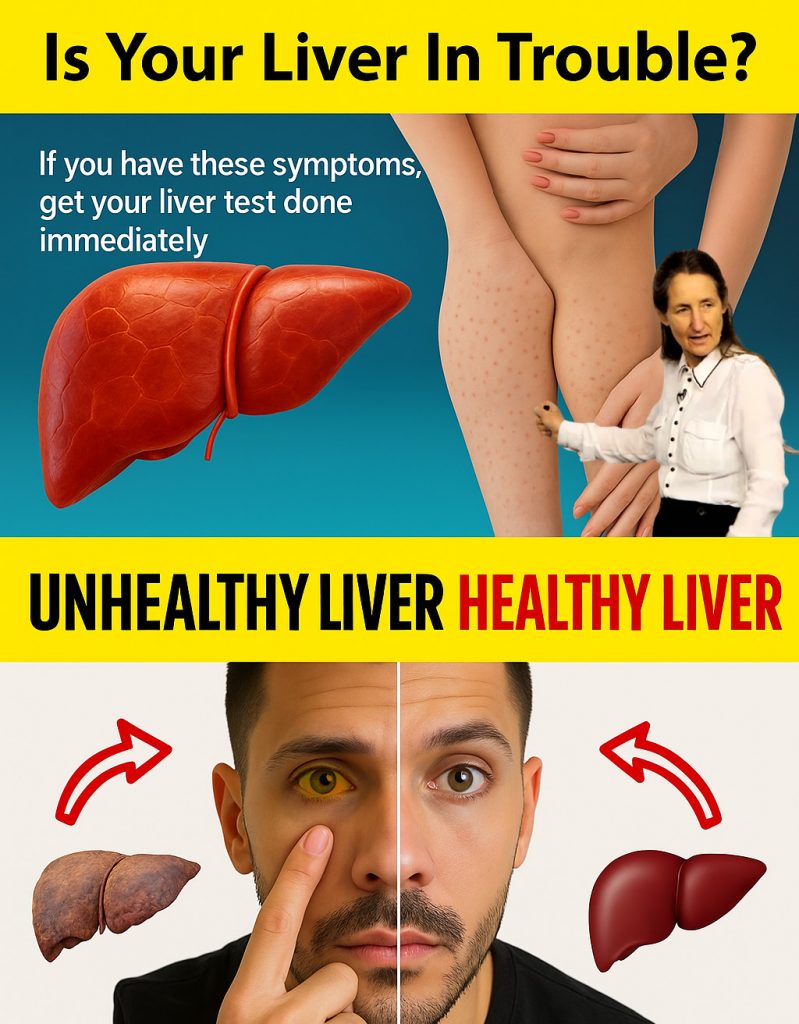Liver cirrhosis—the severe scarring of the liver—often progresses silently in its early stages (compensated cirrhosis). However, as damage progresses and liver function declines, a number of subtle and increasingly severe symptoms can appear. Recognizing these early signs is crucial for slowing or managing the disease.

Here are 12 warning signs and symptoms of liver damage and early-stage cirrhosis to watch for:
Common Early & Systemic Signs
- Persistent Fatigue and Weakness: The liver plays a key role in energy and metabolism. Damage can prevent it from properly processing nutrients and filtering toxins, leading to unexplained, chronic tiredness that doesn’t improve with rest.
- Loss of Appetite / Unexplained Weight Loss: A damaged liver struggles to produce the bile needed for digestion, often causing frequent nausea and a general lack of interest in food, resulting in unintentional weight loss.
- Nausea or Vomiting: Frequent feelings of sickness, often accompanied by general malaise (feeling unwell).
- Mild Abdominal Pain: A dull ache or discomfort, often felt in the upper right quadrant of the abdomen where the liver is located.
- Easily Bruising or Bleeding: The liver is responsible for producing clotting factors (proteins necessary for blood to clot). When liver function is impaired, bruising occurs more easily, and small cuts may take longer to stop bleeding.
Visible Skin & Fluid Signs
- Severe Itchy Skin (Pruritus): This can occur due to the liver’s inability to excrete bile properly, causing bile salts to build up in the bloodstream and deposit under the skin, irritating nerve endings.
- Swelling in Legs, Ankles, or Feet (Edema): The liver produces albumin, a protein that helps keep fluid inside blood vessels. When production is low, fluid leaks out, accumulating in the lower extremities.
- Redness of the Palms (Palmar Erythema): An often-overlooked sign where the palms (especially the area near the thumb and little finger) become blotchy red due to changes in hormone levels (like increased estrogen).
- Spider Angiomas (Spider Veins): Tiny, spider-like blood vessels that appear on the skin, particularly on the chest, face, or arms. Like red palms, these are due to abnormal blood vessel dilation caused by hormonal imbalances.
- Dark Urine & Pale Stool:
- Dark Urine: Excess bilirubin (a yellow waste product the liver normally processes) is filtered out by the kidneys, resulting in urine that is amber or tea-colored.
- Pale Stool: The liver’s inability to secrete enough bile (which gives stool its normal brown color) leads to stools that are pale, clay-colored, or white.
Signs of Advancing Disease
- Jaundice: The most recognizable sign, characterized by the yellowing of the skin and the whites of the eyes, caused by a significant buildup of bilirubin in the blood.
- Abdominal Swelling (Ascites): As the disease advances, fluid accumulates in the abdominal cavity, causing pronounced swelling. This is often accompanied by the feeling of being bloated or gassy.
🛑 Important Medical Warning
If you experience several of these symptoms, especially jaundice, severe abdominal swelling, vomiting blood, or sudden confusion, you should seek immediate medical attention. Cirrhosis is a serious, progressive condition, but early diagnosis and management of the underlying cause (e.g., stopping alcohol use, treating hepatitis, managing fatty liver disease) can significantly slow its progression and prevent life-threatening complications.









